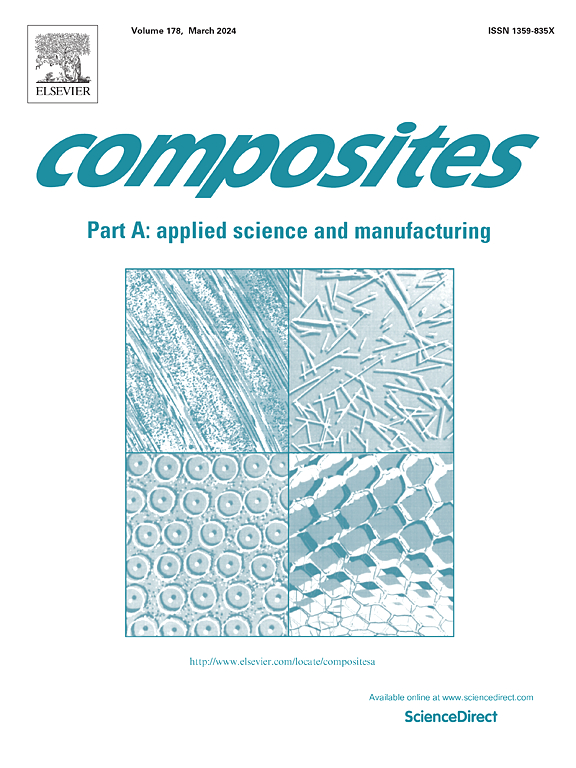威布尔模量对薄层伪韧性混合复合材料应力-应变曲线形状的影响
IF 8.1
2区 材料科学
Q1 ENGINEERING, MANUFACTURING
Composites Part A: Applied Science and Manufacturing
Pub Date : 2024-10-16
DOI:10.1016/j.compositesa.2024.108532
引用次数: 0
摘要
本文介绍了一种使用 ABAQUS CAE 脚本模拟薄层伪导混合复合材料机械响应的数值方法。参数研究表明,界面临界断裂能对于准确模拟损伤机制和力学行为至关重要。正确的剪切强度识别使模型能够捕捉实验观察结果,包括碎裂和应力-应变曲线中的高原区域。分析表明,这些复合材料的力学行为在很大程度上与低应变层的碎裂位置模式无关。结果强调了 Weibull 模量对应力-应变响应的重要影响,精心选择的结果与实验数据具有很强的相关性。不同材料的最佳拟合 Weibull 模量存在明显差异,高模量碳纤维的值更高。本文章由计算机程序翻译,如有差异,请以英文原文为准。
The effect of the Weibull modulus on the shape of the stress–strain curves of thin-ply pseudo-ductile hybrid composites
This paper presents a numerical approach using ABAQUS CAE scripting to simulate the mechanical response of thin-ply pseudo-ductile hybrid composites. A parametric study demonstrates that interface critical fracture energy is essential for accurately modeling damage mechanisms and mechanical behavior. Correct shear strength identification enables the model to capture experimental observations, including fragmentation and the plateau region in the stress–strain curve. The analysis shows that the mechanical behavior of these composites is largely independent of fragmentation location patterns in the low-strain layer. Results emphasize the significant impact of the Weibull modulus on the stress–strain response, with careful selection leading to strong correlation with experimental data. Notable differences in best-fit Weibull moduli were observed for different materials, with higher values for high modulus carbon fibers.
求助全文
通过发布文献求助,成功后即可免费获取论文全文。
去求助
来源期刊

Composites Part A: Applied Science and Manufacturing
工程技术-材料科学:复合
CiteScore
15.20
自引率
5.70%
发文量
492
审稿时长
30 days
期刊介绍:
Composites Part A: Applied Science and Manufacturing is a comprehensive journal that publishes original research papers, review articles, case studies, short communications, and letters covering various aspects of composite materials science and technology. This includes fibrous and particulate reinforcements in polymeric, metallic, and ceramic matrices, as well as 'natural' composites like wood and biological materials. The journal addresses topics such as properties, design, and manufacture of reinforcing fibers and particles, novel architectures and concepts, multifunctional composites, advancements in fabrication and processing, manufacturing science, process modeling, experimental mechanics, microstructural characterization, interfaces, prediction and measurement of mechanical, physical, and chemical behavior, and performance in service. Additionally, articles on economic and commercial aspects, design, and case studies are welcomed. All submissions undergo rigorous peer review to ensure they contribute significantly and innovatively, maintaining high standards for content and presentation. The editorial team aims to expedite the review process for prompt publication.
 求助内容:
求助内容: 应助结果提醒方式:
应助结果提醒方式:


